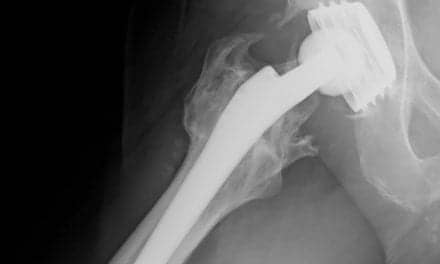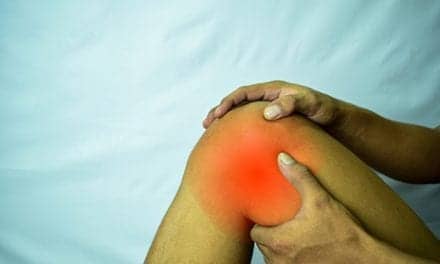
Researchers test the performance of a runner who is wearing compression tights. (Photo courtesy of The Ohio State University Wexner Medical Center)
Researchers from The Ohio State University Wexner Medical Center note that although wearing compression tights can greatly reduce muscle vibration during running, they don’t reduce muscle fatigue, compared to running without them.
“When your muscle vibrates, it induces a contraction that uses energy, so the theory was that less muscle vibration would translate to less fatigue,” says Ajit Chaudhari, who led the study and is an associate professor of physical therapy, orthopedics, mechanical engineering and biomedical engineering. “However, the reduced vibration was not associated with any reduction in fatigue at all. In our study, runners performed the same with and without compression tights.”
During the study, participants ran on a treadmill for 30 minutes at 80% of their maximum speed on 2 different days—once while wearing compression tights, and once without them. Motion capture technology tracked each runner’s body position within a fraction of a millimeter. Participants’ leg strength and jump height were tested before and after each run, according to a media release from The Ohio State University Wexner Medical Center.
“We have a specialized treadmill with force sensors embedded in it that measures how hard a runner’s foot is landing, how they’re able to push off, and how that changes over time,” Chaudhari states. “The runners also wore a heart rate monitor so we could measure their exertion throughout the run.”
A possible for trying to slow fatigue with compression tights, aside from running faster for longer, is the theory that fatigued runners alter their form and put more strain on their joints, which may increase overuse injury risk. However, further research showed that experienced runners had no more strain on their joints at the end of a training run than at the beginning, the release adds.
Chaudhari concludes, however, that although the study suggests that compression tights didn’t reduce fatigue among runners, there may be other benefits to wearing them.
“There is nothing in this study that shows it’s bad to wear compression tights,” he shares. “Every little bit of perception counts when running long distances, so they may help runners in ways we aren’t able to measure.”
Research conducted in the future will focus on other aspects of compression tights and the possible benefits to runners with regard to performance and workout recovery.
The study was presented at the American College of Sports Medicine’s annual meeting.
[Source(s): The Ohio State University Wexner Medical Center, Science Daily]





